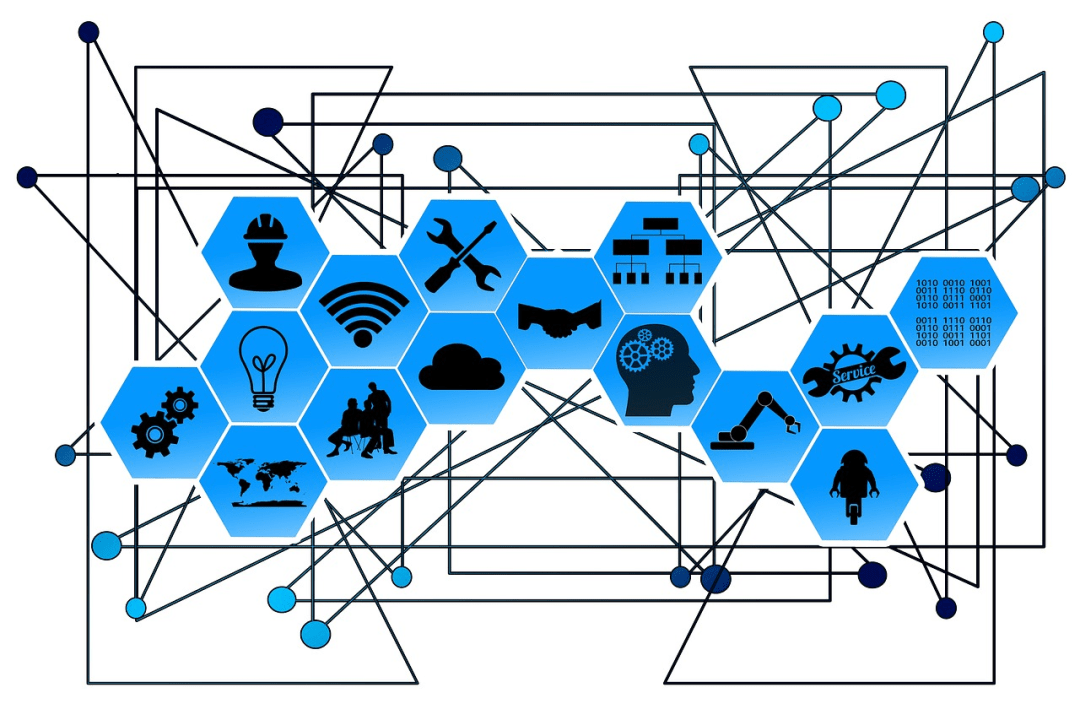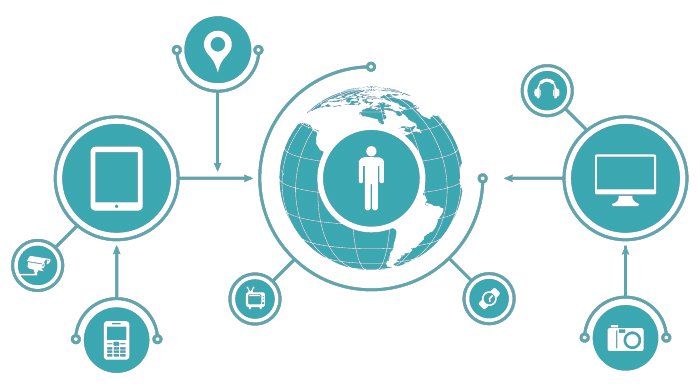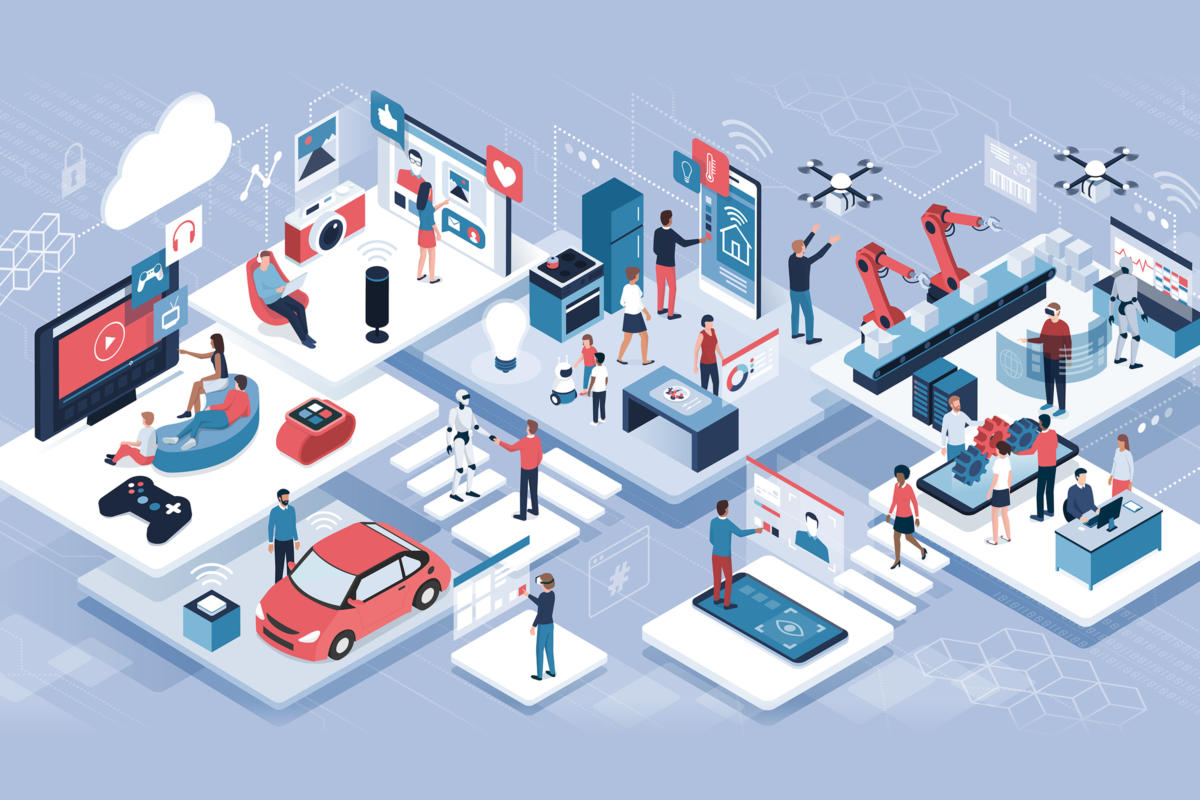What is the Difference Between M2M and IoT?
M2M and IoT are the two most well known remote access technologies. In this post, we’ll outline the difference between them and help you choose the best fit for yourself.
With the fast pace of technological development, it can be easy to mix up various technologies. That’s often the case when it comes to the Internet of Things and Machine-to-Machine communication. In the tech discourse, these two are often considered equal. However, while the objectives achieved by both technologies are similar, their operating modes are different.
What are the distinctions between M2M vs IoT? Which one has more benefits for your next project? These questions will all be answered in the post.

What is Machine-to-Machine Communication?
The term “machine-to-machine” communication technology is used to describe any form of connection between two devices that doesn’t require human assistance.
The communication process can include the following:
- Radio-frequency identification (RFID)
- Sensor monitoring
- Telematics
- Telemetry
- A smart service
- Remote monitoring
M2M works by connecting sensor data and transmitting it to a network. As Machine-to-Machine communication uses public access networks like Ethernet or Wi-Fi, its implementation is cost-effective compared to other remote communication models (such as SCADA).
The primary application of M2M had to do with telemetrics - pioneering telephonic companies that started using telephone lines and radio waves to transmit the signal. Later, the technology was adopted by manufacturing, healthcare, finance, and other industries.
M2M is a cornerstone of the Internet of Things. However, it’s worth pointing out that while IoT needs M2M communication to be implemented, not all machine-to-machine applications have to do with the Internet of Things. The main difference between the two lies in the access model.
When it comes to the M2M vs IoT comparison, it’s important to remember that machine-to-machine systems use point-to-point communication whereas IoT relies on connected IP-based networks to send the data from a remote device to a gateway, the cloud, etc.
Popular M2M applications include:
- ATMs
- Vending machines
- Smart meters
- Connected life support devices
What’s the Internet of Things?
The Internet of Things is a system of devices with unique identifiers (known as UID) capable of transmitting information over a network. IoT requires no human-to-human or human-to-machine interaction.
The Internet of Things is a result of the convergence of the Internet with microelectromechanical systems, wireless technologies, and microservices.
Now IoT is widely used in industries like the automotive (autonomous car, vehicle-to-vehicle communication), logistics and supply (supply chain tracking), manufacturing (warehouse management), banking (connected branches), and so on.
Comparing M2M vs Internet of Things, you could say the former is a result of taking the latter to the next level.
While M2M enables device-to-device communication, the Internet of Things allows multiple machines to design a connected data network.
As IoT is software-based, its operating mode is similar to that of SCADA (a principle of remote monitoring system that transmits data from a device into a program and presents it in the form of insights).
The Internet of Things has a broader range of applications than M2M and allows users to have better control over gathered data.
The most popular Internet of Things applications include:
- Smart home
- Wearables
- Smart cities
- Connected cars
- Smart electricity grids
- Digital health devices
What Are the Differences Between M2M and the IoT?
By their definitions, both M2M and IoT provide remote access and communication between devices. Neither of those interactions require human supervision. So, while the goal is essentially the same (achieving connectivity), the means to go about achieving it are different. Let’s take a closer look at what distinguishes M2M from IoT.1. Point-to-Point vs Network-Based Access
One of the chief differences between the two connectivity technologies lies in the way communication is conducted.
M2M connectivity is achieved through point-to-point communication embedded by on-site hardware.
The Internet of Things on the other hand implies connectivity through IP networks. IoT communication of two devices, gateways, or systems can be achieved using a network protocol.
2. Reliance on Software
Another major factor in IoT vs M2M is the extent to which they rely on software.
For M2M connectivity, there is no such reliance. The technology is completely hardware-based. In order to communicate, devices don’t even need an Internet connection.
For the Internet of Things, an active connection is required. Also, while IoT relies on hardware (think environmental sensors or wearables), it requires a platform for data processing and aggregation. It’s safe to say IoT is both hardware- and software-based.
3. Scalability
Scalability is another feature that showcases the difference between machine-to-machine communication and the Internet of Things.
Machine-to-machine communication has a limited number of integration options. In order to communicate, devices need to be compatible. Thus it is not possible for two machines with different tech specs to connect using M2M. That’s why technology is widely used for small-scale applications, such as maintenance.
The Internet of Things is designed with large-scale interaction in mind. As soon as a developer has a solution capable of managing communication, the number or the nature of devices is not important. There are no hardware-based integration limits for IoT implementation.
4. Differences in Data Delivery
Machine-to-machine or Internet of Things communications both enable data gathering. A fundamental difference lies, however, in the way each of them process collected information.
Machine-to-machine data is usually directed towards performing a one-off task that improves the maintenance of the device. It’s not a common practice for M2M projects to transfer collected insights and integrate them into a large-scale framework.
The Internet of Things has a wider range of opportunities in terms of data visualization and analysis. All the information collected by a sensor is integrated into an analytics system where it can be compared to data gathered from other sources, broken down into insights, and otherwise analyzed. That’s why IoT is often used by businesses and governments to improve team efficiency and increase an organization’s forecasting abilities.
5. Subjects of communication
Last but not least, there’s a huge difference in what kind of communication is enabled by M2M and Internet of Things communications.
Machine-to-machine communications are strictly device-based.
The Internet of Things, on the other hand, has a broader circle of possible communication subjects. Apart from devices, it can connect humans with machines, a device and a gateway, a gateway and the data system, as well as two data systems.
With IoT, a device can get data from the environment around it (widely used in the automotive industry as part of the vehicle-to-everything communication model).
These are the most significant differences between the Internet of Things and machine-to-machine communication.
Our Experience
In our experience at Ardas-IT, M2M technology still has a wider implementation range, whereas IoT is an innovation that companies are excited but cautious about. Judging by the amount of workforce involved and the implementation cost, machine-to-machine communications are still easier to implement.
However, when it comes to the range of opportunities, scalability, and flexibility, the Internet of Things is headed for the win. M2M is convenient for a fair share of projects of the present but IoT is the one to dominate in the future.
We would suggest using M2M to test the concept of connectivity, find its pros and cons, and prove its validity for your business objectives. For a large-scale, ambitious plan, it’s best to go with the Internet of Things.
Conclusion
It’s important to understand that IoT and M2M are not synonymous technologies. While both enable device-to-device communication, data gathering, and storage, and neither requires human supervision, they vary in terms of the means for achieving connectivity and the goals companies use them for.
If you’re looking to develop an M2M or IoT-enabled project, contact Ardas-IT. We have an experienced team of developers familiar with both IoT and M2M technologies. At Ardas-IT, we’ll help you find out if IoT or M2M is the best fit for your application. Our software engineers will create a step-by-step development strategy that will allow you to control every stage of product design.
Ardas-IT has created solutions for startups and global corporations alike, both in the public and private sector. To see which projects we’ve worked on, visit our portfolio. If you want to ask development-related questions or discuss a potential project, don’t hesitate to contact us!

